Review of popular species and subspecies of Achatina
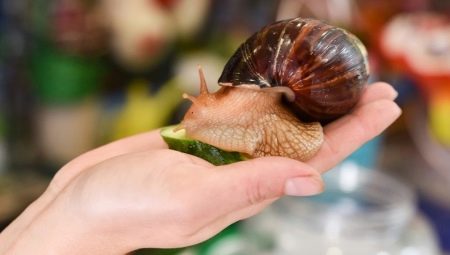
Giant achatina are members of the subclass of land pulmonary snails... They are increasingly found in home collections. More and more people prefer to have these molluscs at home on a par with traditional cats and dogs.
However, before you start these cute creatures at home, you need to learn about their varieties and some of the features of their content. There are many types of Achatina in nature. It is impossible to provide a description of all of them within the framework of one article, therefore, we will consider brief characteristics of some of the names most often mentioned in the literature and among breeders.

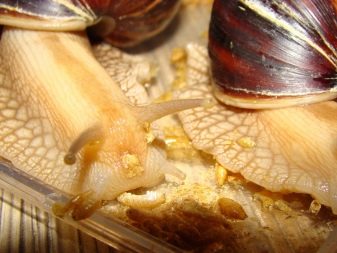
History
Achatina were brought to Europe from southern exotic countries. They live in large numbers in Africa, South America, Mauritius and other southern islands. Due to their enormous fertility, they are able to quickly settle in whole colonies over vast territories, eating vegetation and damaging agricultural land. Therefore, in some tropical countries, it is forbidden to breed and sell them. But in a temperate climatic zone, they do not survive and are able to reproduce only in artificial conditions.
They are considered the largest among all types of snails. The size of an adult can reach 20 cm. This snail attracts with its meek disposition, lack of noise, smell and allergies, as well as a variety of shell colors.


Interesting Facts
The shell, which serves as a kind of house for the mollusk, grows throughout its life - the older the individual, the more turns there are at the shell. In addition, the carapace can change its color depending on the food that the animal eats. All Achatina are hermaphrodites, that is, they have a masculine and feminine principle, therefore, they do not need a partner for fertilization. If two individuals live in the same space, they are able to fertilize each other.
Not all Achatina species lay eggs. Some of them viviparous... These mollusks absolutely do not distinguish sounds, and only slightly distinguish semitones.
At home, snails live on average 4-5 years. However, with proper care and proper nutrition, Achatina can live up to 10-15 years.
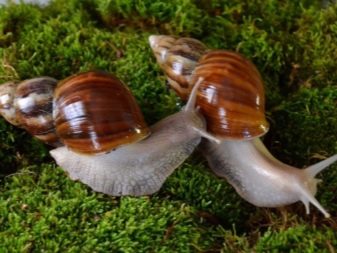
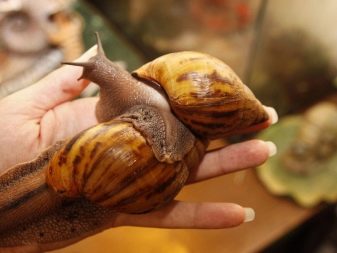
Varieties
If you decide to have such an exotic pet at home, you should learn how to identify the breeds of snails and their subspecies. The living conditions of these snails are similar, but there are some differences in behavior and appearance. As mentioned above, there are a lot of different types of Achatina in nature - about 60 titles, some of them have subspecies. Let's list the most famous of them.
Achatina achatina
They are easily recognizable by the tiger coloration of the shell: dark brown spots on a yellow background. Among them there are individuals with a standard color, and there are also albino Achatina, whose body is white, devoid of any pigment, and the shell is light yellow. It is believed that in this way the snail adapts to the high temperatures in its homeland and protects itself from overheating. It is believed that for the first time albinos were brought to Russia in 2009 by a breeder from Austria. Since then, the population has been expanding.
At home, albino Achatina need to create conditions close to the tropics - increased temperature and humidity.
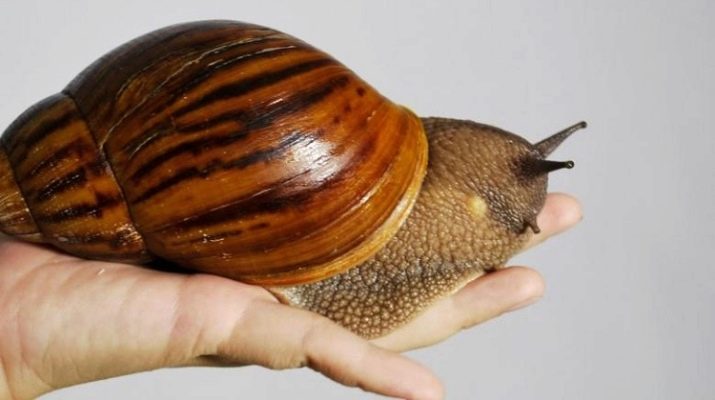
Achatina fulica
The most numerous and unpretentious species of Achatina. It can go without food and drink for up to several weeks, and multiply without any special conditions. It is customary to distinguish between 5 main subspecies of Achatina fuliki.
- Fulika standard... The shell itself is brown with various shades and variegated patterns, while the apex and columella (the inner part of the shell near the mouth) are white. The body color can be from light beige to dark brown.
- Fulica hemeli (hamillei). It can be distinguished from the standard by its pink apex (the top curl on the shell).
- Fulica albino body (albino body). The color of the shell can be whatever you want, and the body is exclusively milky-white in color. In some sources it is also called "White Jade" (White Jade).
- Fulica Rodatzi Dunker. The body and shell are of a solid yellow color without a pattern.
- Fulica leucist (Achatina fulica leucistic). They also have a white body, but the pupils are black.
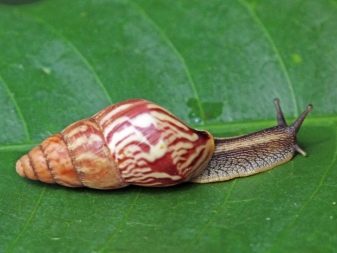

Achatina glutinosa
Achatina glutinose, from Latin translates as sticky - its shell has a glossy, sugar-like surface and seems sticky. It is slightly smaller than fuliki in size - its length is about 10 cm.
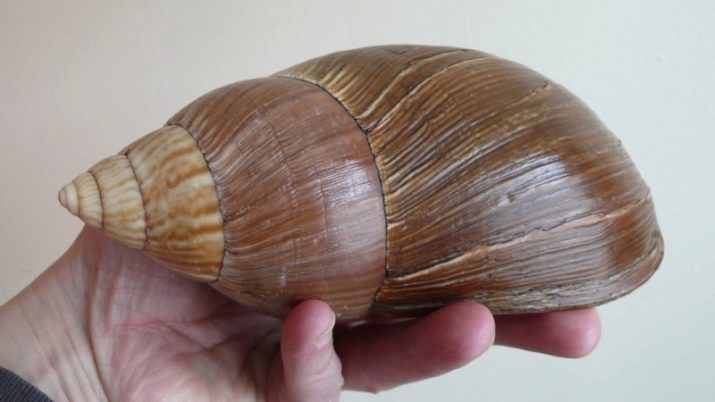
Achatina reticulata
Reticulata (translated from Latin as mesh) has a shell with a rough surface and a fine mesh pattern. The snail's head is usually slightly brighter than the rest of the body.

Achatina albopicta
At first glance, albopicta is very similar to reticulum. They can be distinguished by the presence of a pink apex. In addition, albopicta does not have such a pronounced ribbing as in the previous species. The final curl on the shell is usually darker than the others, and the first curls are spotty, uneven in color.
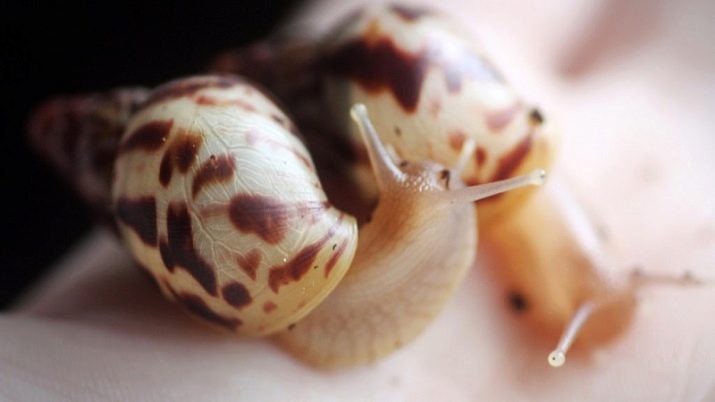
Achatina iredalei
Iradeli is also called lemon because of the yellow shell. The size of the snails is small - only 5-8 cm. It differs from its relatives in that does not lay eggs, but gives birth to live cubs.
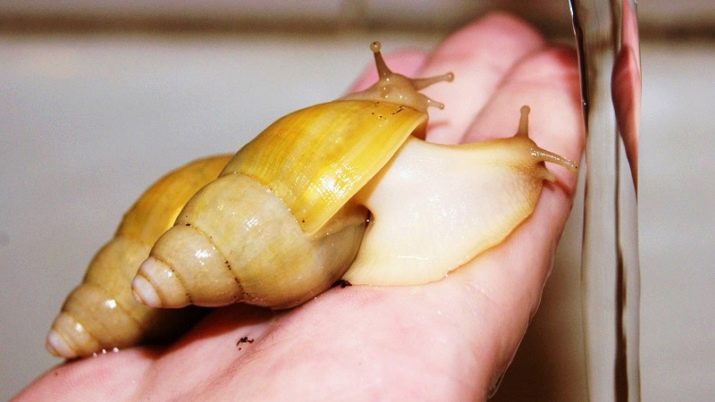
Achatina craveni
Kravenis are also characterized by their small size (5-7 cm with the shell) and are also viviparous. Kraveni does not tolerate heat well, therefore, at home, among them there is a high mortality rate. The optimum temperature for keeping is about + 15 ... 20 degrees Celsius. They love high humidity.
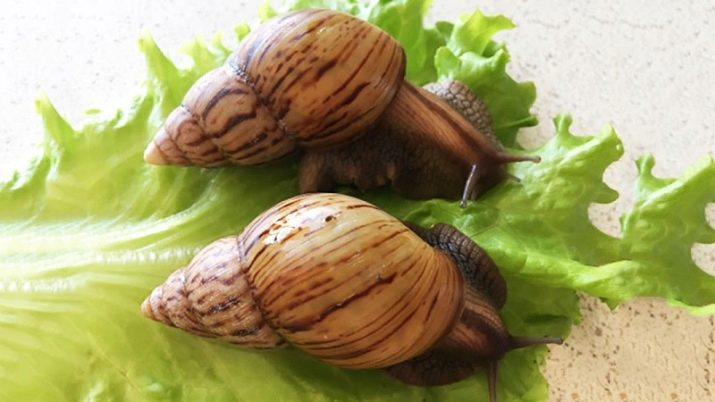
Archachatina marginata ovum
Marginata ovum belongs to the archahatina family. Unlike Achatina, these are larger and more massive individuals. Their shell is wider and more rounded, colored yellow-brown, and the leg has a V-shaped silhouette. The body is dark, gray-brown.
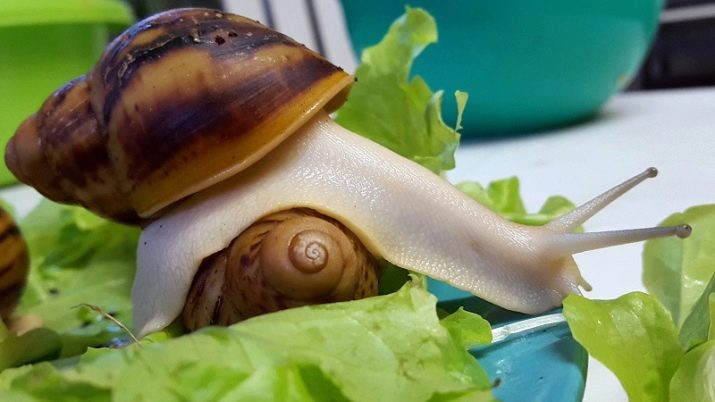
Achatina immaculata
Immaculate grows rapidly. An adult snail is up to 15 cm long.The color of the shell can be different, but most often they are variations on the theme of red and brown. The intensity of the pigment may vary slightly in individuals, depending on the conditions of detention and habitat. A wide strip runs along the entire body, starting from the head of the snail. Several times they tried to import a two-ton imaculum for breeding in Russia.
The peculiarity of this subspecies is that the final coil on the shell is two-colored. However, this subspecies of snails turned out to be very capricious and unadapted to the conditions of life in captivity.
To date, there is no information about the two-color imaculates available on the territory of our country.

Achatina panthera
Achatina panther is a very beautiful snail. Its shell is decorated with multi-colored stripes. Due to its iridescent color, the panther is very popular with breeders. Its size is about 14 cm. Depending on the color of the shell, it is customary to distinguish several subgroups of the Achatina panther.
- Férussac. This group is considered the standard. Her homeland is Mauritius. Their shell is walnut-colored with rainbow stripes ranging from white-pink to deep purple. Covered with a thin protective film, which gradually peels off closer to one year of age.
- Lamarckiana Pfeiffer. This subspecies lives in Malawi, Madagascar and Mauritius. The Lamarckian has a more elongated shell than other panthers, the pattern is in the form of chaotically scattered spots and strokes. The final round of the shell is monochromatic.
- Antourtourensis Crosse. This is a rather rare subspecies. According to some reports, it was formed in Madagascar, therefore sometimes this group of Achatina is called "Madagascar". This group is albinos - the shell is devoid of any color, and the snail's body length is only 8-9 cm.
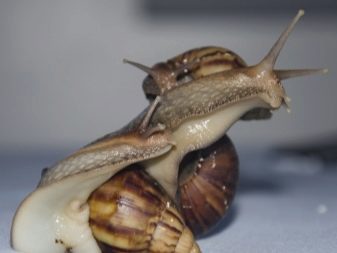

Zanzibarica Bourguignat
The Zanzibariki snails, native to the African countries of Zanzibar and Tanzania (hence their name), are a viviparous species. In captivity, they rarely grow more than 10 cm. The body of the zanzibariki is light gray, the head has a dark stripe. Individuals born in natural conditions have a darker body than those born in captivity. The shell is straw-yellow, with a variegated brown mesh pattern. Patterns may vary between natural and farmed molluscs. In domesticated individuals, it is more abstract, while in domesticated young, broad lines of brown pigment are observed.
Sometimes the drawing may be missing.
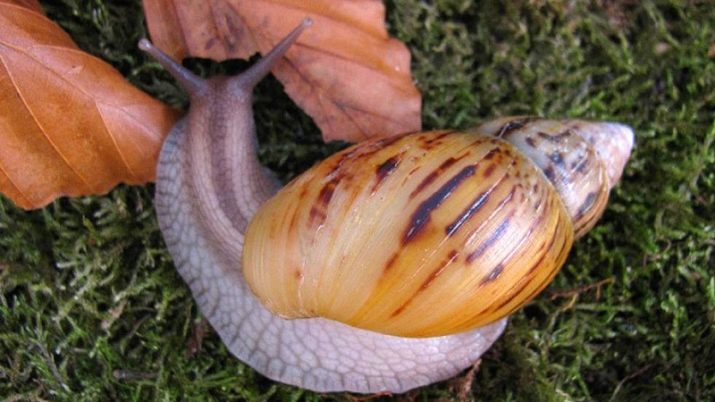
Weynsi Dautzenberg
The countries of the Congo and Burundi are considered the homeland of this species. The size of the shell is slightly less than 10 cm, the color is light beige with a brown zigzag pattern. The color of the apex is pink with varying degrees of intensity, the columella is pure white.

Tincta
This species is also native to the Congo. The length of the shell is about 12 cm, the color is brindle, the intensity depends on the place of origin, the body is pinkish-brown, the apex is white from birth, turns pink by the year.
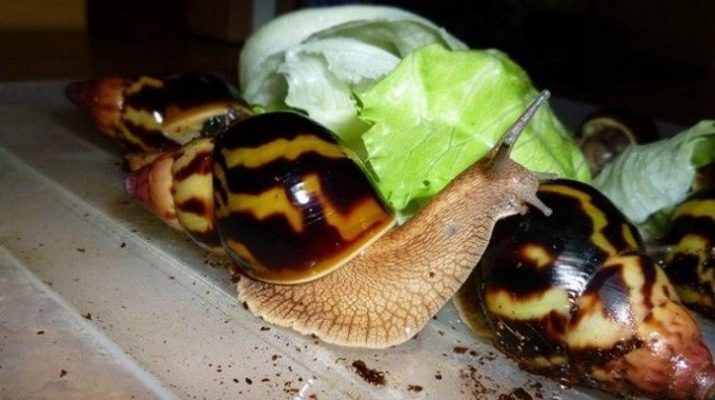
Achatina vestita
A very rare species, practically not found in private collections. Homeland - the countries of South Africa. In nature, it leads an arboreal lifestyle. The size of the shell is about 7 cm, the surface is rough and exfoliated, as if with a "cannon" effect. The body is beige, with a brown stripe, the head is somewhat darker than the body. The main background of the shell is brown with a light blurred pattern.
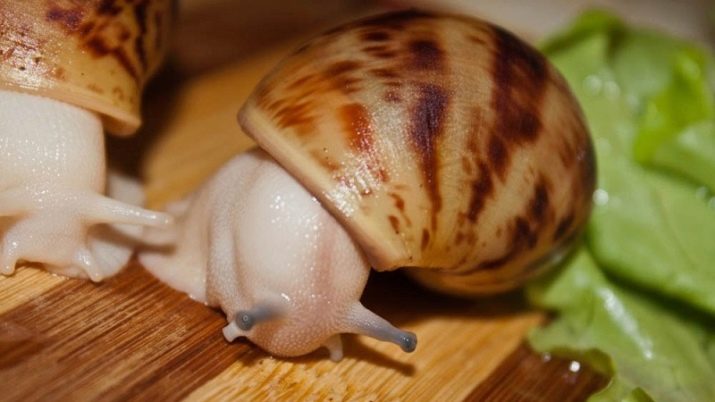
Achatina varicosa
Achatina varicosa is about 7-10 cm in size, native to Africa. In some sources, the name zebra is also found. The shell is light, with brown or black waves. Apex and columella are white and pink. At temperatures below +15 degrees Celsius, it hibernates.
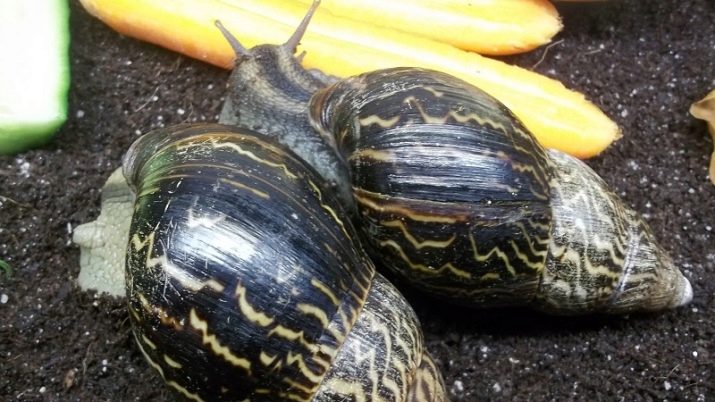
Achatina schweinfurthii
Another rare and little-studied species of snails, which became known to the general public in 2013. These snails were brought to the European continent from Sudan and Congo. The shells of these Achatina grow up to 14-15 cm. A shell with a glossy surface, pistachio color, with dark brown stripes.
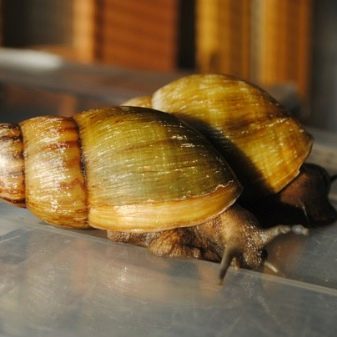
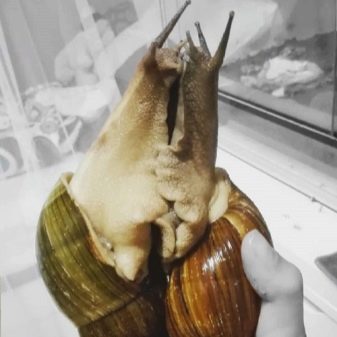
For information on how to care for Achatina reticulata snails, see the next video.








